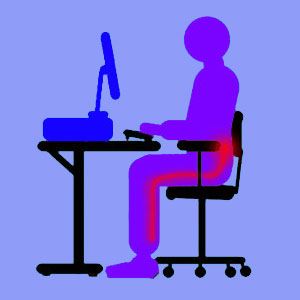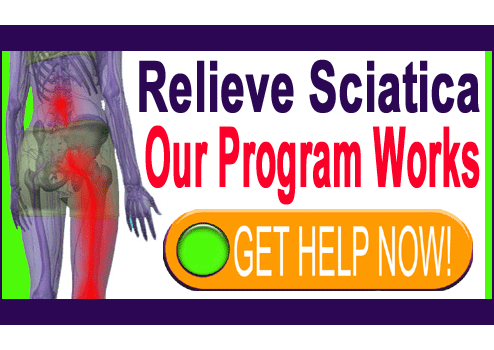
Treating sciatica at home is a popular approach for many back and leg pain patients who avoid professional medical care. People may choose home treatments for a variety of different reasons. Many patients write to me telling that they do not have health insurance and can not afford professional medical care. Others have tried everything in the way of professional sciatica treatments from their doctors and have been so utterly frustrated by the abysmal results that they decided to go it alone and try to find their own cure. Still other patients have endured bad experiences with doctors and now simply do not trust them at all.
In the worst of cases, the patient may simply not have access to professional care due to a remote location or a lack of medical infrastructure development locally. Whatever the reason for home treatment, there are some options which may work well, depending on the diagnosed or suspected source of pain. However, there are also many selections which may not be so effective, so patients are warned to be cautious consumers when looking to purchase products for home sciatica care.
Results of Treating Sciatica at Home
The vast majority of home remedies for sciatica are symptomatic in nature. This means that they might make the condition easier to live with, but will do little, if anything, to actually resolve the underlying source of pain. Symptomatic sciatica treatment is ok for humanitarian purposes, particularly if there is no hope for an actual cure. However, when a cure is available, symptomatic treatment is a type of slavery which should be avoided or only used until the real cure can be enacted. Here are some of the popular symptomatic therapy modalities for treating sciatica at home:
Ice or heat for sciatica may be soothing for some patients. No real risks or costs involved here, making this approach ideal.
Sciatica drugs usually consist of OTC products for home use without professional medical supervision. Regardless, continuing use of OTC products can still enact serious health problems.
Ayurveda may be beneficial for believers in this Indian system of healthcare. Just remember that some practices may be counterproductive.
Sciatica exercises and stretches may provide temporary or partial relief. Yoga, Pilates and tai chi are the most popular activity-based exercise programs for sciatica.
Sciatica herbs may be able to enact pain management for some who follow the all natural path. Be warned that herbs can still interact with any medications you might be using.
TENS devices are popular, although their clinical effectiveness is still in question. Being that the cost is low and risks are insignificant, there is little to lose by trying TENS.
Bed rest is perhaps one of the least enlightened of all treatments, particularly when used for an extended time frame.
Inversion for sciatica is a favorite for many sufferers and may help enact home-based spinal decompression in a few patients. Very rarely, inversion may actually help provide a lasting cure for pain which is caused by some types of nerve compression.
Sciatica back braces typically function more as emotional security blankets than they do for providing any actual structural support for the spine.
Curing Sciatica at Home
There are few real hopes for enacting a true cure for sciatica using home-based therapy. In my experience, there are really only 2 possibilities which may work well for sufferers with certain types of back and leg pain conditions.
Hypnosis for sciatica may enact a cure in extremely rare instances. Self-hypnosis programs, cds, dvds and written materials are low cost and low risk.
Knowledge therapy is the ideal solution for those who are suffering from ischemic sciatica. This is one of the most prevalent types of pain commonly misdiagnosed as stemming from a circumstantial lumbar spinal source.
Treating Sciatica at Home Tips
I like the idea of sciatica home treatment in some cases, but feel that many patients hope for too much when it comes to potential results. Most feel that continuing use of any of the symptomatic modalities will eventually cure them, but this is a fallacy. Symptomatic treatment will not cure pain; it will simply help make it more manageable.
I also find fault with the idea of avoiding doctors altogether, since this is a dangerous practice. In some rare instances, there are serious structural concerns which require professional medical care, and even surgery, to resolve. Ignoring these conditions may lead to permanent damage, disability or even death.
If you are treating sciatica at home and avoiding professional medical attention, at least get checked out to be sure that your condition qualifies for the limits of home remedy use.





